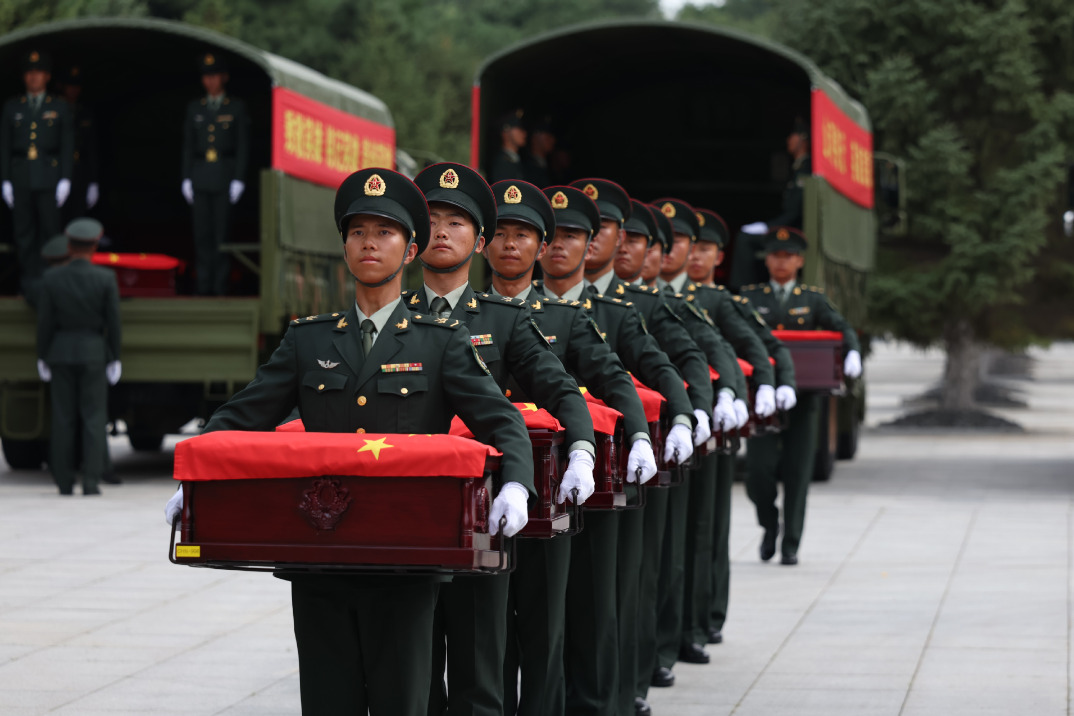Critical time to bridge Sino-US trust gap


China and the US can renew their cooperation on health security by focusing on areas where results would be quickly achievable and have a high impact
The COVID-19 pandemic should have been a critical opportunity for Sino-US cooperation. But instead of seeing the two countries joining hands to tackle this common challenge, we have witnessed previous mechanisms of cooperation fall apart as the brouhaha over the pandemic's origins and intense competition over geopolitical influence have poisoned the atmosphere for effective cooperation. Although, under the Joe Biden administration, both countries have resumed cooperation to tackle the climate crisis, there has been no serious bilateral effort to combat the pandemic and strengthen global health security.
Despite the current environment, there is clearly shared national interest in the two countries cooperating in critical areas of health security. These areas of cooperation include but are not limited to: vaccines and therapeutics, travel, public health infrastructure, biosafety and biosecurity, supply chain resilience and countering disinformation.
To be specific, both countries can collaborate for the mass production and speedy distribution of vaccines and therapeutics to lessen the effects of the pandemic; hold talks on coordinating and easing travel restrictions for international students and businesspeople; negotiate working agreements on bio-surveillance and sample sharing; cooperate to ensure transparency in government regulations and guidelines and develop codes of conduct on dual-use research of concern; establish a special bilateral committee to stabilize supplies and create negative lists of medical products that are exempt from fair-trade penalties; and encourage dialogue and exchanges among journalists reporting on public health issues.
Global concern at the emergence of the potentially highly transmissible Omicron variant of the novel coronavirus only highlights the urgent need for Sino-US cooperation. Given that new variants are more likely to emerge among unvaccinated populations, it is no surprise that Omicron was first diagnosed in South Africa, where no more than 25 percent of the population is fully vaccinated. Both the US and China can leverage their vaccine development and manufacturing capacities to ensure global equitable access to highly effective vaccines. With US funding and China's genomic sequencing capabilities, both countries can also lead the global genomic surveillance efforts to closely monitor the evolving viral genes.
Due to the broader downturn in China-US relations and the politicization of the pandemic, however, a functionalist argument that simply asserts the benefits of cooperation will not be sufficient to convince policymakers in both countries to take action. A high-impact strategy to promote cooperation may achieve minimal traction when facing barriers that are difficult to overcome. For example, while cooperation over the development and distribution of vaccines and therapeutics represents perhaps the most urgent area of potential cooperation, domestic resistance and geopolitical considerations make it less likely to happen in the immediate future.
In view of the trust gap between the two countries, priority should be given to measures that are achievable, have high impact in the near term, and have few downsides. Using these criteria, three areas of cooperation-travel, public health infrastructure and supply chain resilience-stand out as most likely to deliver substantive results in the short term.
They face relatively few barriers to implementation but could generate major positive spillover effects. In implementing the cooperation strategy, the two countries should rely on existing venues or mechanisms that have a track record of successful cooperation, such as that between the US Centers for Disease Control and Prevention and the Chinese Center for Disease Control and Prevention. The Collaborative Program on Emerging and Re-emerging Infectious Diseases and the China-US Health Care Forum established in 2005 could be resurrected for diplomatic conversations. Whether they use existing or novel mechanisms, successful cooperation will require both sides to pay close attention to the other parties' actual needs.
Cooperation in three other areas-vaccines and therapeutics, biosafety and biosecurity, and countering disinformation-also holds the promise of high returns for improving health security but faces higher substantive and political hurdles. That said, both countries can shape the environment for future cooperation by investing in reassurance and confidence-building measures. Given the sensitivity of discussing biosafety and biosecurity issues, the two sides could rely more on non-state actors such as the Gates Foundation and the China Medical Board and nonmilitary actors such as the US Agency for International Development and the China International Development Cooperation Agency in the initial stages of cooperation.
The two countries can build on the virtual meeting that President Xi Jinping and President Joe Biden held in mid-November, where there was recognition of the importance of cooperating on issues such as health security. Just as the two sides have begun to cooperate in tackling climate change, they should be able to do so on this similarly pressing issue.
Huang Yanzhong is a senior fellow for global health at the Council on Foreign Relations and a professor at Seton Hall University's School of Diplomacy and International Relations. Scott Kennedy is a senior adviser and trustee chair in Chinese Business and Economics at the Center for Strategic and International Studies. They are authors of Advancing US-China Health Security Cooperation in an Era of Strategic Competition (CSIS, December 2021). The authors contributed this article to China Watch, a think tank powered by China Daily.
The views do not necessarily reflect those of China Daily.


































